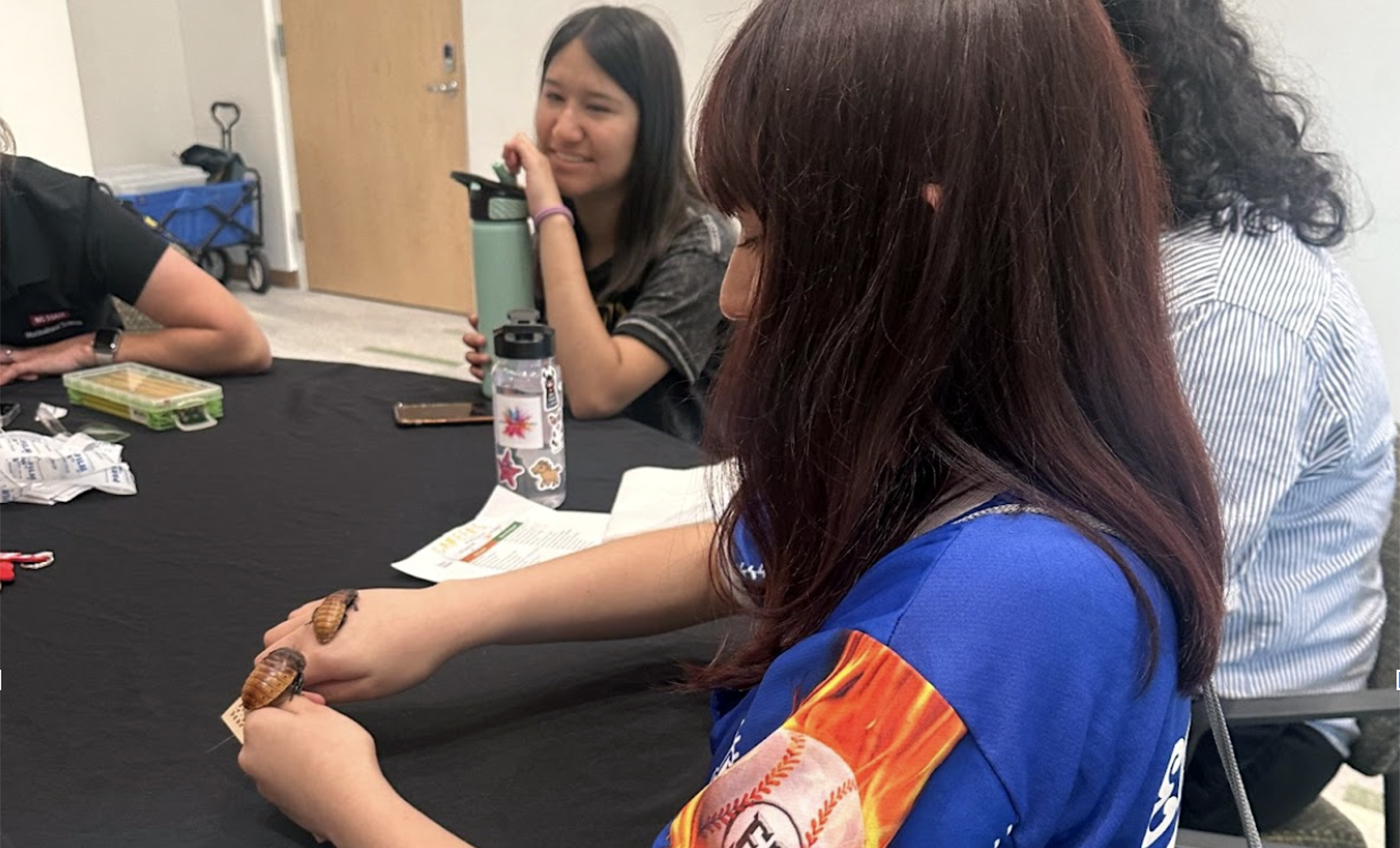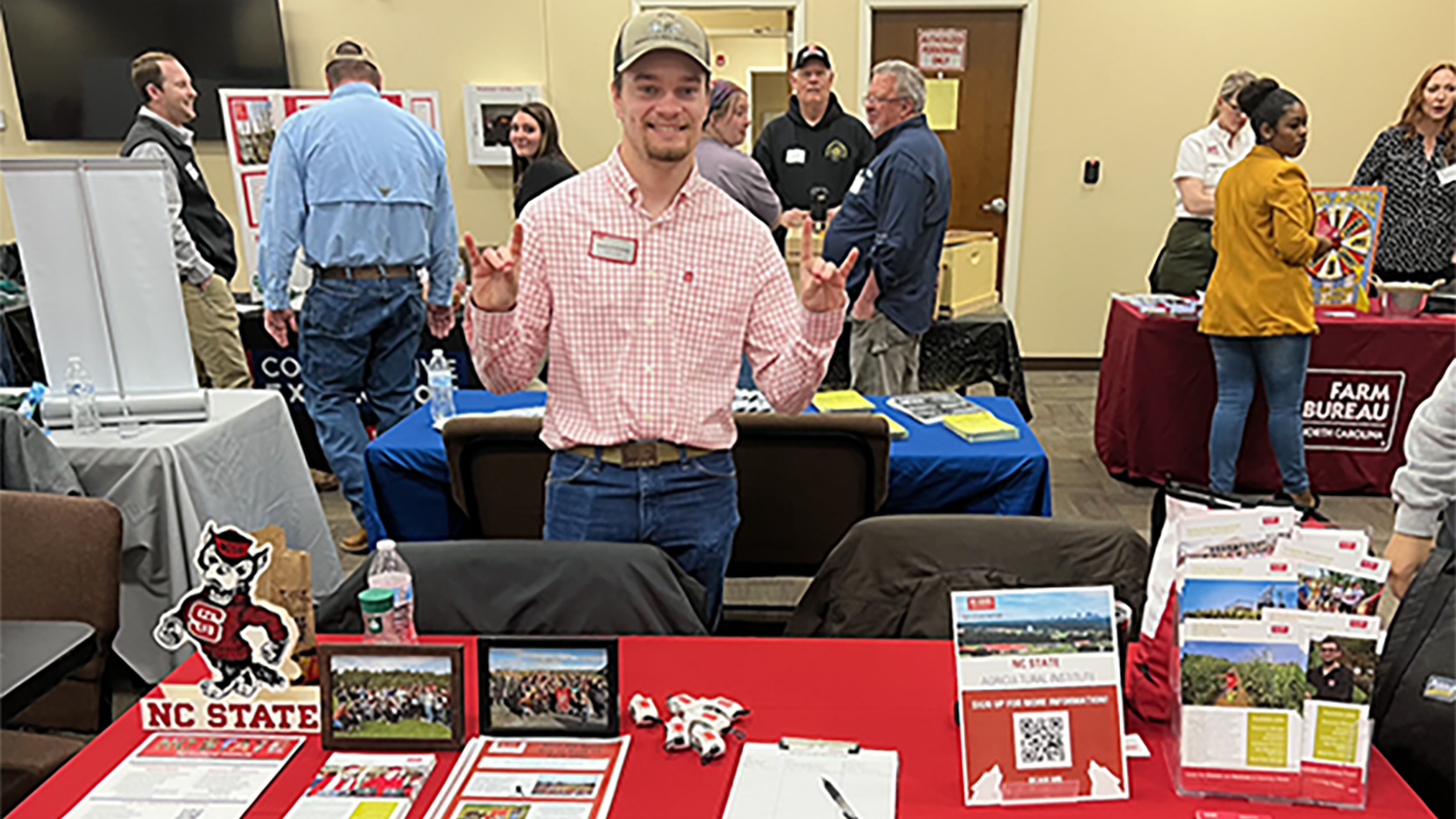Faculty Focus: Fighting to Save Cassava

Cassava is one of the most important crops in Africa. It’s a starchy, potato-like vegetable used for food, ethanol and other applications. And in Africa, it accounts for more than a third of human calorie consumption.
Because cassava can thrive despite poor soil conditions and drought, it is often the only food source when other crops fail. But outbreaks of Cassava Mosaic Disease (CMD) and other viruses have become an increasingly difficult challenge in recent decades, as farmers have found that varieties favored because of their resistance are increasingly vulnerable to disease.
Enter Trino Ascencio-Ibanez and his colleagues. They’re hard at work – with the help of two major grants – protecting a critical component of the food supply for an entire continent.
Why is this situation so serious?
It is very, very difficult. The issue here is that one of these viruses is moving from East Africa towards West Africa. It’s very difficult to have a solution once the virus is there. There are no antivirals in plants that can commercially be used. Even if they were commercially available, there’s not enough money in sub-Saharan Africa to actually do something like that.
A planting that’s six months old, sometimes you see it already all devastated. The farmers are still hoping to get something, but we know when we see it that they are not, so we let them know. They put so much effort, and it’s the only thing that is there. It is a very compelling story. It’s very hard.
If you translate the current problem in East Africa to West Africa, and it becomes serious in West Africa, it’s going to impact the economy because they actually grow cassava commercially in West Africa.
Tell us about the grants you’ve received.
One of the grants we received is an NSF-PIRE grant in the amount of $5 million. We have three different departments at NC State engaged in this, as well as partners from Rutgers University, Auburn University, North Carolina A&T State University, and our counterpart in Nairobi (Kenya), BecA.
[pullquote color=’red’ align=’left’]What we are looking at is the bottleneck of evolution.[/pullquote]It started two years ago, but it took us all the way to now just to set up the space to start the actual experiments. What we are looking at is the bottleneck of evolution. We’re interested in finding out what makes the virus evolve, and what are the drivers and bottlenecks?
We’re artificially inoculating cassava with CMD viruses, and then doing two different approaches to study the virus evolution. We cut a stem from an infected plant, and then put it in soil to root, and it will produce a diseased plant. Once it shows symptoms we will cut another one and plant it again, and again, and again. We are taking samples of the plants every cycle. Then we’re going to sequence the virus of every single step. That will let us know through time if something changes in that virus. Now we’re also doing the same approach of sequencing with transmission through insects.
How do you reach the growers?
Our partners in Africa are just wonderful … they coordinate all the outreach through Extension. They are doing everything they can to reach these people. They have been training Extension agents. They have been training breeders. They have been training everyone.
Tell us about your work on the second grant.
The other grant is $2 million from the Bill and Melinda Gates Foundation. This started with a serendipity event. Professor Nicki Robinson, who is retired now, worked with an event called silencing, which is a form of gene expression control in plants. But now you can artificially silence genes. She was interested in using a geminivirus as a vector for gene silencing. She was using a very humble plant that is called Arabidopsis, which is a model plant. She was looking for silencing vectors.
Arabidopsis is an interesting plant because it grows in the northern hemisphere. It has isolated populations in many areas that have adapted to local conditions. You have the same species, but with a lot of adaptations. She was looking at about 100 of these populations that we call ecotypes. She tested for silencing. What she was looking for, it was to find one of these ecotypes that didn’t show symptoms, but that it shows a lot of silencing. What she found was one of those ecotypes didn’t show symptoms nor silencing at all.
That’s when I came to the equation, and we started studying that particular ecotype. This ecotype turns out not to replicate the virus at all, not only not showing symptoms.
Then we inoculated the ecotype with a different virus, another geminivirus, with no symptoms either. We found what we can call an immunity factor. The task we are now working on is how to pinpoint it. We are fishing for the gene or genes involved in this immunity.
If we can characterize it, and we can figure out how it works, we can either transfer it to cassava or modify the cassava gene to mimic what it does.
There’s an extra component to this grant from the Gates Foundation. We are characterizing elements in the cassava genome that break the resistance. We want to know how that resistance is broken, because if we figure out how then maybe we’ll be able to stop it from happening. Then we’re going to map that resistance, and that’s where we’re going to put it in cassava.
If we can figure all these things out, for instance, the resistance in the ecotype, that is also good for crops, because that’s a commercially available technology. We can license that and patent it if we figure out exactly where it is and how it works. It is something that we’re extremely interested in pursuing for Africa.
Why is this important to you as a person, not just as a researcher?
I love life and how it works. Working with viruses, it was natural for me, because I’m just very curious and the problems were already in the fields. I’ll tell you why this is personal. I come from Mexico originally, and in Mexico, we eat a lot of salsa. Tomatoes, tomatillos, peppers – they are infected by these viruses. This is personal. I want my salsa free of these viruses. I have a strong connection with this. I believe I have to do something if I can. I know other people also would want their favorite food available.
What would be the ultimate outcome for you?
[pullquote color=’red’ align=’right’]When I retire and look at my work, I want to know I did something that was meaningful.[/pullquote]The best possible outcome for me will be to be able to give the breeders the chance to fight these diseases. I’m talking breeders in general, not only the cassava breeders. I’m talking giving anyone the opportunity to fight back these diseases. When I retire and look at my work, I want to know I did something that was meaningful.
What’s your favorite part of all this?
I think the aha moments for the people that I work with is what is most rewarding. That includes everyone, from my colleagues on the managerial part all the way to the growers in the field. We have to make them aware of these diseases so they can fight back. If you don’t know what comes at you it’s very difficult for you to defend.
Many people say ignorance is a bliss, but in these circumstances, I don’t think so. I prefer them to know, and at the same time, we are trying to do something about it as a community. For me, it’s all about the community, because this is a fight nobody can win alone.
Who are your collaborators?
My long-time collaborator Linda Hanley-Bowdoin from the Plant and Microbial Biology Department and I, we are a tough team. We’ve been working on this for a long time. I was her student but now we collaborate.
George Kennedy, in Entomology and Plant Pathology. Also, Alana Jacobsen from Auburn and Louis Jacquai from NC A&T. Dr. Siobhain Duffy at Rutgers. The people at BecA and a lot of technicians, post-docs and graduate and undergraduate students.
We are all in this together. This has been extraordinarily rich for all of us in so many ways.
Our faculty Think and Do the Extraordinary every day.
[button]Support CALS faculty[/button]
- Categories:


